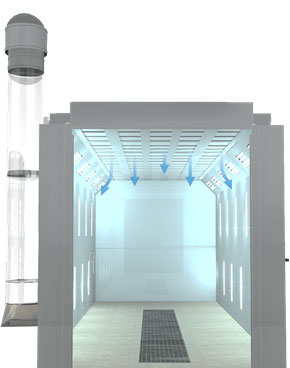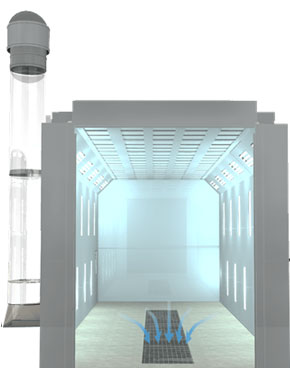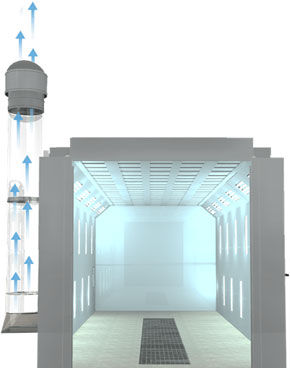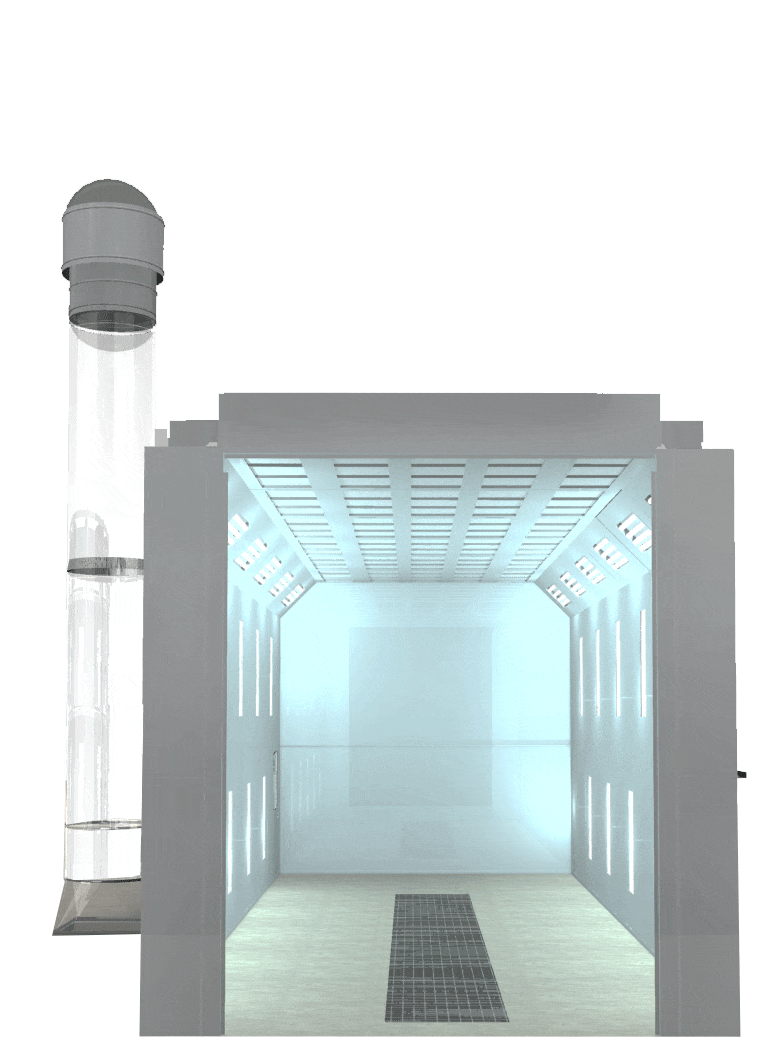Airflow designs are a defining element of any spray booth, so it’s one of the first things finishing operators need to consider when upgrading to a new booth.
While there are only a handful of options when selecting a type of booth, each one carries a unique set of advantages and possible drawbacks. Airflow systems impact every aspect of a booth’s operation, so companies should carefully weigh how their chosen design will affect operating costs, quality of results and workplace safety.
Downdraft Airflow Designs
Recommended for:
Aerospace and Automotive + High-Quality Finishing Requirements
- Powerful Performance
- Pit Installation Requirements
- Moderate Maintenance and Upkeep
Like crossdraft airflow designs, a spray booth with downdraft airflow can accommodate a wide variety of parts and uses. However, downdraft spray booths are typically recommended for parts that require a higher quality finish. Notably, conventional downdraft airflow designs require a below-ground pit for proper operation, which creates additional installation concerns. The term downdraft refers to the direction of airflow in a downward movement from the ceiling down towards the floor of the booth.
Airflow is introduced into the booth’s air supply plenum and drawn through the supply filters located in the ceiling, which acts as a diffusion media. The multiple synthetic layers of filtration are the result of combining a pre-filter, which consists of a high-performance cover mat, with a final filter of progressively structured media, which is thermally bonded and treated with a special adhesive tackifier.
The clean air continues down and around the part, collecting overspray along the way. This overspray is then pulled downwards through exhaust filters located in a grated pit at floor level. As air passes through the exhaust filter, it is pressed through a continuous filament glass fiber with an open weave pattern for maximum efficiency.
To prevent face-loading and fogging, paint-laden air is forced to change direction many times as it passes through the filtration system. Once in the filtration system, it passes through an exhaust fan designed specifically to accommodate the static pressure of the exhaust filters. Elite Finishing Systems precisely matches the size of the motor and fan performance for each booth, so that each fan operates at dBa levels well below OSHA limits.




